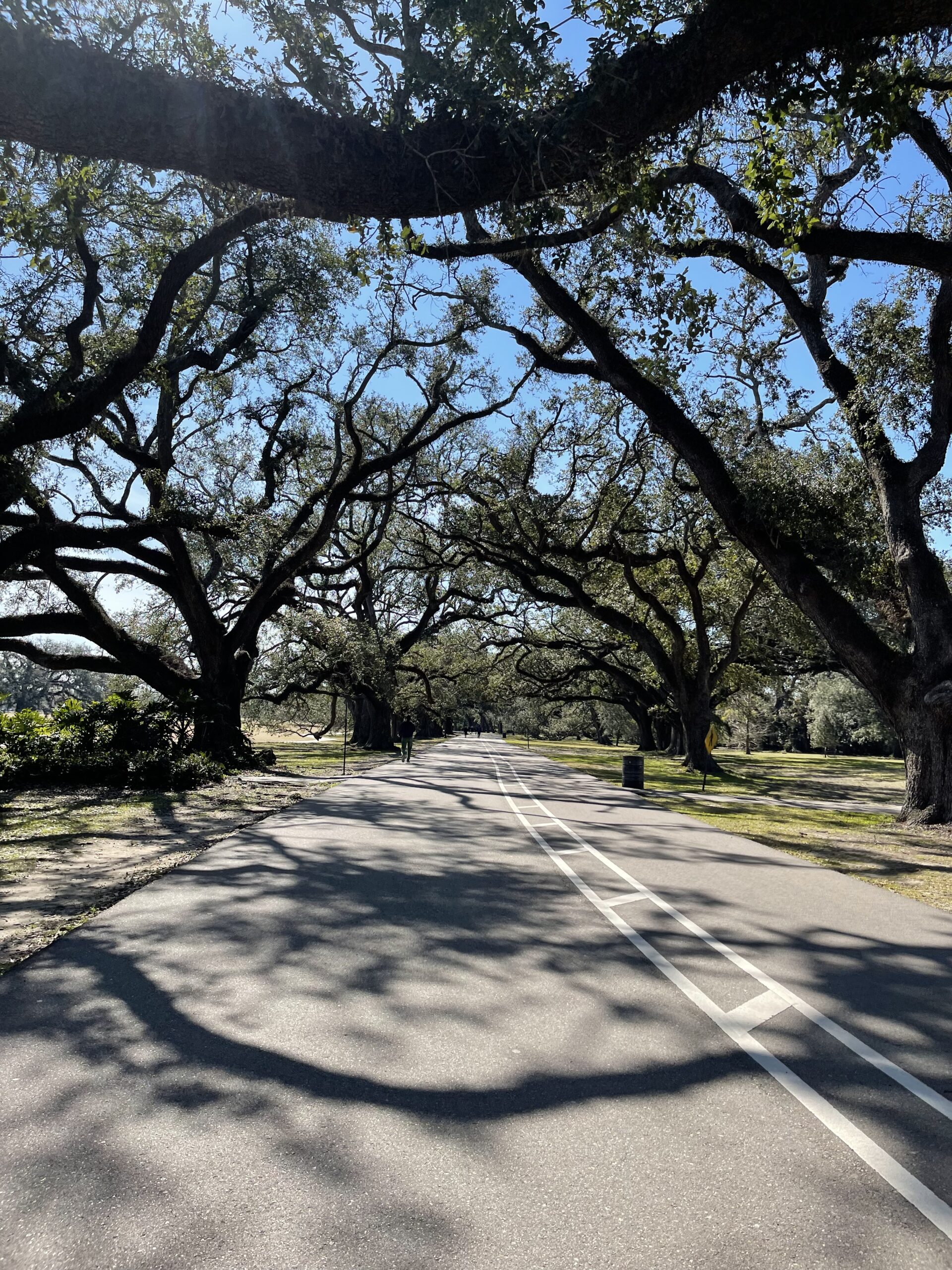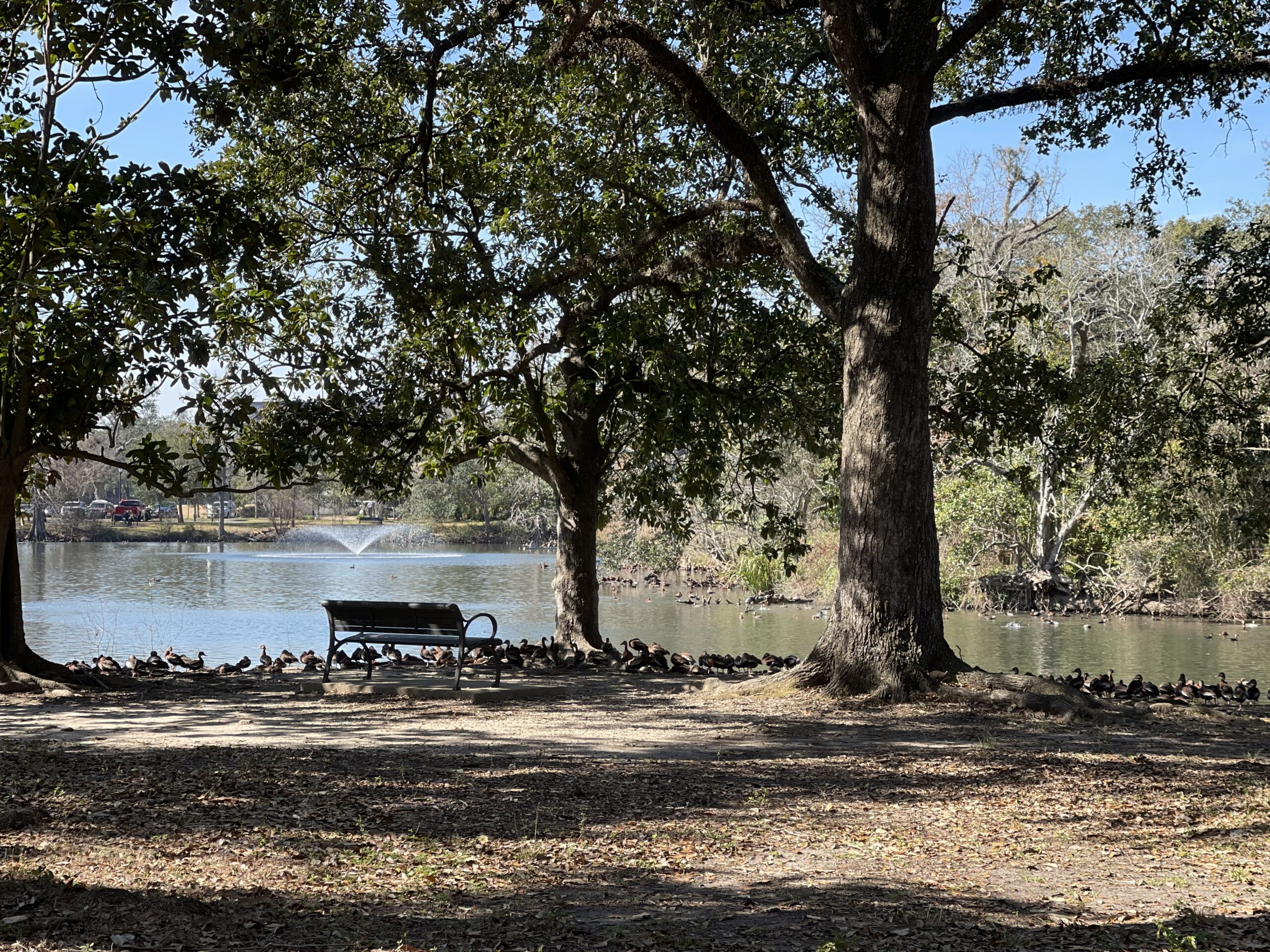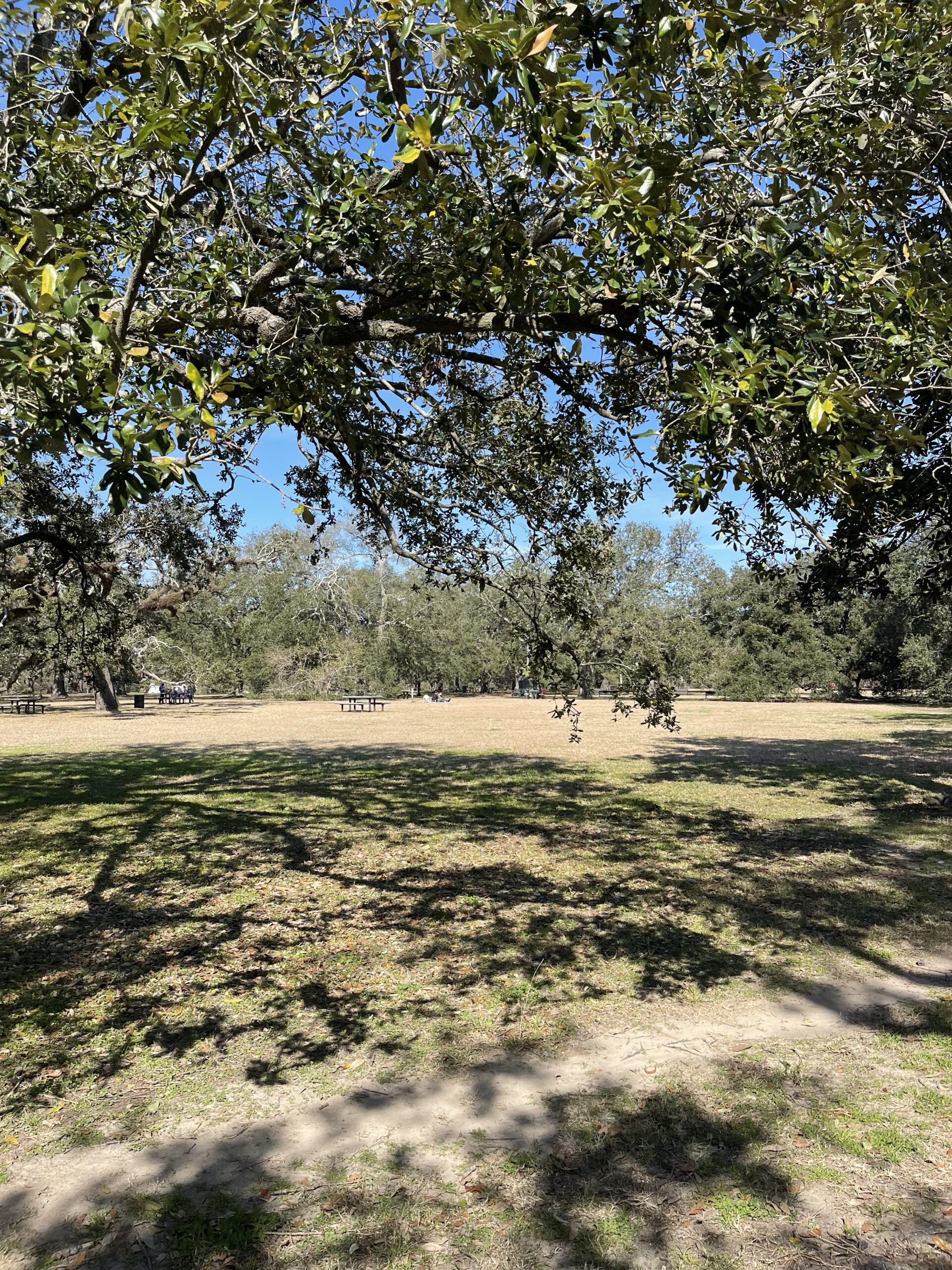Entering my freshman year at Tulane University and arriving in New Orleans, an ocean of unfamiliar faces surrounded me in a city that felt so overwhelmingly big; I became small. Homesick for familiarity, I sought to find my place within New Orleans; I wanted to feel like I belonged. Wandering a quick ten-minute walk away from campus, I found myself crossing Saint Charles Avenue not once but twice, and at each crossing, I had to wait for at least 3-5 cars to pass. Standing before an entrance that had a Jurassic Park feel, I made my way through the two brown pillars of Audubon Park that seem to be made of sandstone.

Audubon Park Pathwalk (Photo by: Lorena Fons Dotson)
Walking under the path guided by a canopy of oak trees, there is maybe 10-feet between the walker and the trees, but the fact that the walker is covered in an umbrella of trees allows for a connection, a feeling of belonging, to take place. . The sense of belonging stems from individuals’ interactions, environments, and communities. It is the experiences that are fostered through their experiences of the world and the relationships that are built with the people and places around them. In Audubon Park, there’s the golf course in the middle of the looping walking path, there’s the pond, the benches, the gazebos, the ducks, and other people walking, jogging, skating, biking next to their dogs that trot beside them. By having only houses on the perimeter of the park, everything belongs to each other; it welcomes all. There is no physical or imaginative border separating the Park from New Orleans. Walls or borders create a sense of separation and “the fear of the other,” serving the purpose of psychological protection as they perpetuate the feeling that they are there to protect you from what is beyond them. They also portray an image of restrictiveness, privacy, and exclusivity that invokes feelings of unwantedness or being unwelcome. Having no walls bordering the park allows for the sounds of swift engines passing by to be followed by the sight of moving cars and students walking in and out of class. It welcomes people to wander freely from any section of the park, removes the feeling of seeking protection, and enables that fear of the unknown to be replaced by feelings of liberty and connection to the world beyond the park.
Connection allows for a sense of rootedness in society as it calls for social well-being. Feeling connected to one’s environment and community can lead to a 50% increased chance of longevity, promote lower levels of anxiety and depression, as well as strengthen the immune system. Since the COVID-19 pandemic emerged, the average American spends 8.8 hours a day in front of a screen and averages ~30 hours a week. The long hours connected in the digital world create a disconnect amongst the physical, leading to increased symptoms of loneliness and depression. The clusters of runners, walkers, kids in the jungle gym, and even the ducks inside Audubon Park foster a sense of unity and restore the purpose of living in a community. Being in nature invokes feelings of gratitude, happiness, freedom, and tranquility. It has also been found to decrease stress hormones and reduce irritability and fatigue. They spark an appreciation for the glistening dew sprinkled over the grass beds, the crisp air, and enable social interaction. Connectedness requires active involvement and significantly correlates to hedonic well-being and hedonic well-being. Hedonic well-being refers to one’s emotional well-being. It is often related to the feel-good competence of mental health. Eudonic well-being is more closely related to life satisfaction. It constitutes autonomy, vitality, and transcendence.

Ducks in Audubon Park. (Photo By: Lorena Fons Dotson)
Public parks are frequently referred to as “the lungs of the city” because of the feel-good component that is associated with Walking into Audubon Park, there are the sounds of leaves rustling in the wind, there’s the sun that raises the average temperature of New Orleans to 70.7°F in March, and the feel of the humidity in the air that usually reaches 74% at this time in spring.
In the 19th century, recreational parks were invented due to the desire of people living in urban cities to connect with nature. These parks followed the “Pleasure Ground” model, used to appreciate nature, sports, and playgrounds. They were located at the edge of cities, making them inaccessible to the working class as getting there was costly, making these parks exclusive to the rich. The debate about whether recreational parks should be more accessible argued that people would be unable to appreciate the beauty of nature and unwilling to care for the flora and fauna that reside within these natural spaces. However, with the rise in immigration during this time, planners sought to create a community gathering space that would encourage people to socialize, speak the same language, and learn about living in America. So the argument was put to the test, creating the “Reform Park.” Citizens displayed the utmost respect for nature and utilized the space to engage with other community members. The small parks became a place of unity, open to all those who sought to play, walk, read, and to connect with nature (DCN, 2018). Since then, public parks have populated the world, creating a place for social interaction and the appreciation of nature. The architecture of parks has also progressed, from the Reform Park to the Recreational Facility and The Open Space Model, each time bringing larger emphasis to the recreational potential of parks as community spaces.

Large spreads of grass in Audubon Park. (Photo by: Lorena Fons Dotson)
Audubon Park consists of a golf course filled with large grass spreads. Bordering it is a looping path walk that is encaged by tall oak trees. The golf course expands across the center of the park, only interrupted by a lagoon on the left-hand side of the park if you are standing on the Saint Charles side. Facing the lagoon, near the outlining path walk, there are a couple of gazebos, placed sporadically, overlooking the quacking ducks in and out of the lagoon. Between these gazebos and stretching all around the park are benches with dedications printed on golden plaques, filled with old and young people talking, reading, or simply observing the by-passers. On the opposite side of the park, the gazebos are replaced by outdoor gyms full of pull-up bars, benches, and other exercise equipment, accompanied by water fountains. Outlining this lies a path walk that circles the park with a walking lane and a biking or skating lane that is clearly outlined by white paint. By the entrance on Saint Charles Street, two large oak trees are hugged by circular benches where live performers play sometimes or book club meetings gather.
The lack of walls or physical borders encourages incomers to wander inside as it rids the park of any feeling of exclusivity and the fear of the dangerous “other.” Upon entering, one is met with the infinite recreational capabilities of the park. Whether it is biking, walking, running, observing, playing, celebrating, or reading, there is space and possibility for it that enables a sense of connection with nature and by-passers. Its restorative nature evokes positive emotions that instill a sense of community within unfamiliar faces sharing all-too-familiar smiles.
 NOLAbeings
Multimedia artist Claire Bangser created NOLAbeings as a portrait-based story project that marries...
NOLAbeings
Multimedia artist Claire Bangser created NOLAbeings as a portrait-based story project that marries...
 Data corner: Adobe Suite (create a PDF, social media graphic, presentation, edit a photo and video
Data corner is where you go to work with analytics and top tech skills. It takes on everything from PERL and SQL to Canva and Sprout Social.
Data corner: Adobe Suite (create a PDF, social media graphic, presentation, edit a photo and video
Data corner is where you go to work with analytics and top tech skills. It takes on everything from PERL and SQL to Canva and Sprout Social.
